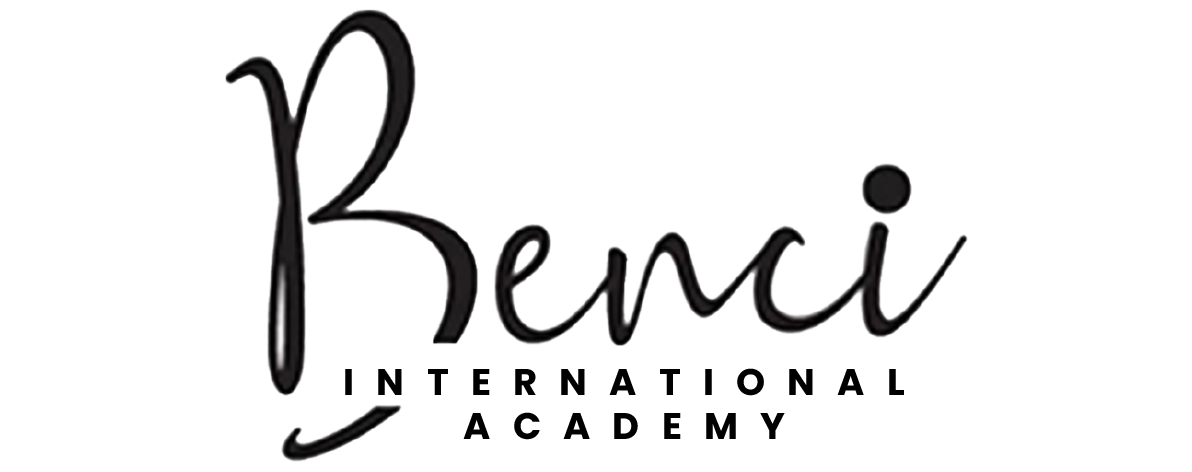Hair coloring is not merely about changing hair’s hue; it’s an artistic process that combines creativity, science, and skill. From enhancing natural beauty to making bold statements, hair coloring has become a vital part of personal expression. Understanding the intricate tones and techniques involved in hair coloring can elevate results and ensure client satisfaction.
In this blog, we’ll explore the evolution of hair coloring, the science behind tones, modern techniques, and how institutions like Benci International Academy empower professionals with the skills to excel in this transformative art.
A Brief History of Hair Coloring
Hair coloring has deep historical roots. Ancient Egyptians used henna to achieve red tones, while Greeks and Romans experimented with natural dyes for blonde or dark shades. By the 19th century, chemist William Perkin discovered synthetic dyes, paving the way for modern hair color products. The 20th century saw innovations like L’Oréal’s first commercial hair dye and the introduction of at-home coloring kits. Today, hair coloring is a multi-billion-dollar industry.
The Science of Hair Coloring
1. Hair Structure
To understand hair coloring, one must grasp the hair’s structure:
- Cuticle: The outermost layer, which must be opened for color penetration.
- Cortex: Contains melanin, the pigment responsible for hair’s natural color.
- Medulla: The innermost layer, present in thicker hair.
2. How Hair Dye Works
Hair dye interacts with melanin in the cortex. Temporary dyes coat the hair shaft, while permanent dyes penetrate the cuticle, altering the natural pigment.
3. The Role of Developers
Developers, or oxidizing agents, open the cuticle and activate the color molecules. The strength of the developer (measured in volumes) determines the level of lift or deposit.
Understanding Hair Color Tones
Hair tones refer to the underlying hues in a color. They are categorized into three groups:
1. Warm Tones
Warm colors include red, orange, and yellow shades, adding vibrancy and richness to hair.
2. Cool Tones
Cool tones, such as blue, green, and violet, create sleek, sophisticated looks.
3. Neutral Tones
Neutral tones balance warm and cool hues, offering natural and versatile results.
4. The Importance of Undertones
Understanding the hair’s natural undertone is crucial for achieving the desired result. For example, lifting dark hair may reveal red or orange undertones, which need to be neutralized for cooler results.
Types of Hair Color
Hair coloring is a versatile art with options to suit various preferences:
1. Temporary Hair Color
- Coats the surface of the hair.
- Lasts until the next wash.
- Ideal for short-term changes or events.
2. Semi-Permanent Hair Color
- Deposits color without lifting natural pigment.
- Lasts for 8–12 washes.
- Perfect for enhancing natural tones.
3. Demi-Permanent Hair Color
- Uses low-volume developer for deeper penetration.
- Lasts 20–28 washes.
- Adds depth and covers grey hair.
4. Permanent Hair Color
- Alters the natural pigment permanently.
- Ideal for complete color transformations or grey coverage.
- Requires regular maintenance to manage regrowth.
Hair Coloring Techniques
1. Balayage
A freehand painting technique creating natural, sun-kissed highlights. It’s low-maintenance and grows out beautifully.
2. Ombre and Sombre
- Ombre: A gradual transition from darker roots to lighter ends.
- Sombre: A softer, more blended version of ombre.
3. Highlights and Lowlights
- Highlights: Lighter strands to add dimension.
- Lowlights: Darker strands for depth.
4. Babylights
Ultra-fine highlights mimicking the natural lightness of children’s hair.
5. Root Shadowing
A technique to blend root regrowth with the rest of the hair for a seamless look.
6. Global Coloring
Applying a single color throughout the hair for a uniform look.
7. Color Blocking
Bold, contrasting sections of color for dramatic effect.
Hair Coloring Tools
1. Brushes and Bowls
Used for precise application and mixing colors.
2. Foils
Essential for isolating sections and achieving multi-tonal effects.
3. Cap Highlighting
A traditional method for pulling strands through a cap for highlights.
4. Heat Tools
Enhance color penetration and processing speed.
Choosing the Right Hair Color
1. Skin Tone
The hair color should complement the client’s skin undertone (warm, cool, or neutral).
2. Lifestyle
Consider maintenance requirements and the client’s daily routine.
3. Hair Health
Assess hair’s condition before coloring to avoid damage.
Color Correction
Color correction is a critical skill, addressing issues like:
- Removing unwanted tones (e.g., brassiness).
- Adjusting over-lightened or darkened hair.
- Fixing uneven color application.
Professionals must master techniques like toning, re-pigmentation, and neutralization to achieve optimal results.
Hair Coloring Trends in 2024
1. Face-Framing Highlights
Delicate highlights around the face to brighten and enhance features.
2. Bold Fantasy Colors
Vibrant shades like pastels and neons for self-expression.
3. Glass Hair
Glossy, reflective finishes achieved with shine-enhancing treatments.
4. Color Melting
Seamless blending of multiple shades for a natural look.
Hair Coloring at Benci International Academy
Aspiring hair professionals can elevate their skills at Benci International Academy, where comprehensive courses in hair coloring are offered. From mastering tones to advanced techniques, the academy provides hands-on training, enabling students to excel in the competitive beauty industry.
Key Highlights of Benci’s Training:
- In-depth knowledge of color theory and hair science.
- Practical sessions on modern coloring techniques.
- Guidance from industry experts.
Conclusion
Hair coloring is an ever-evolving art that combines creativity and technical expertise. Understanding tones, mastering techniques, and choosing the right products are essential for achieving stunning results.
With the right training, professionals can transform hair into a canvas of self-expression. Institutions like Benci International Academy equip learners with the tools and knowledge to thrive in this dynamic field.
Whether it’s a subtle change or a bold transformation, hair coloring continues to empower individuals to express their unique identity through vibrant shades and innovative styles.



